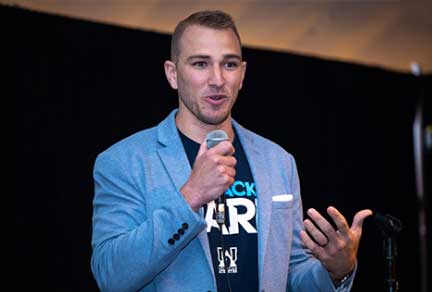How CAR-T cell and gene therapies are redefining the traditional pharmaceutical pricing and reimbursement model
Very high prices plus limited immature data – the perfect payer storm
Several emerging classes of transformational therapies, such as CAR-T cell and gene therapies, offer potentially curative patient benefits in areas of very significant unmet need (such as pre-treated metastatic cancers and hereditary genetic diseases - often in small patient populations). As such, these therapies can demonstrate positive clinical benefit-risk ratios to regulators at earlier stages of their clinical development, when supported by less mature and comprehensive data packages. However, reflective of their groundbreaking patient benefits and potential substantial healthcare cost savings, these therapies can be potentially cost-effective at very high per patient prices. Indeed, most CAR-T cell and gene therapy products’ pivotal clinical trials include fewer than 50 patients with follow-up typically of less than 2 years at launch, and yet their prices can be in excess of $1 million per patient (for a single-treatment therapy, Table 1).
INN: Strimvelis – autologous CD34+ enriched cell fraction that contains CD34+ cells transduced with retroviral vector that encodes for the human ADA cDNA sequence; Kymriah – tisagenlecleucel; Yescarta – axicabtagene ciloleucel; Luxturna – voretigene neparvovec-rzyl; Zolgensma – Onasemnogene abeparvovec-xioi; Zynteglo – Autologous CD34+ cells encoding βA-T87Q-globin gene
How do you price a therapy that offers the potential for cure but only has 1- or 2-year follow-up data at launch?
Appropriate pricing reimbursement of these very high-cost therapies based upon such immature data will be very challenging under the traditional payer model (where drugs are priced at launch and purchased prior to treatment initiation). Further, their single treatment nature means that the entire cost of therapy must be paid up front, which places a large risk upon the payer upon purchase, that the transformational outcomes promised are not realized. Appropriate pricing and access to these therapies will necessitate an increased utilization of various innovative reimbursement mechanisms, several of which we discuss below.
Dynamic pricing: changing the price of a drug post-launch as the data evolves
One alternative to pricing therapies at launch is to allow the price to vary as the data evolves. In both England and Germany, KYMRIAH® and YESCARTA® are subject to dynamic-pricing agreements where temporary reimbursement has been granted (under the Cancer Drugs Fund in England and time-limited benefit assessments in Germany) pending collection of real-world and clinical trial data that can inform a final reimbursement and pricing decision. These dynamic pricing schemes may make intuitive sense, but their true test will be if a therapy’s price is not justified by the subsequent evidence and manufacturers may be unwilling to comply with payer discount demands. This could result introduction of a ‘time-lottery’ whereby patients diagnosed after a certain date will not be able to access potential groundbreaking therapies, which could drive intense political and public pressure and scrutiny.
Performance-based pricing: tying reimbursement to how the drug performs in the real-world
Linking reimbursement to real-world performance is another way to effectively bridge the gap between data and price. Both the gene therapy, STRIMVELIS® and the CAR-T cell therapy, KYMRIAH® launched (in the US and Italy, respectively) with what can be characterized as “full money-back guarantees”, if the treatment didn’t work as promised. Operationalizing such schemes can be associated with significant resource implications to track patient outcomes. Accordingly, they are best used! short-term outcomes (indeed, the agreement for Kymriah involved only paying for patients who responded by the end of the first month). However, the major uncertainty for CAR-T and gene therapies relates to their long-term curative promise, which these schemes may not be able to effectively capture.
Leasing: payment in installments, tied to performance
Instead of upfront payments, spreading payments over several years can dilute the financial impact of transformative therapies (as well as coincide with realizing healthcare savings from their curative benefits). Further, linking payments to performance milestones (so that the payer stops paying when a therapy stops working) can further alleviate payer concerns. This approach has been proposed by the only two gene therapies whose prices exceed $1 million: ZYNTEGLO® and ZOLGENSMA®, both of which have announced their intention to offer payers, pay-over-time options up to 5 years linked to patient performance. Nevertheless, manufacturers may not be able to accommodate delays to their return on investment as well as substantial proportion of their revenues being at-risk. This had led to discussions over third-party financial institutions acting as intermediaries to allow payers to pay in installments whilst the manufacturer receives revenues upfront. An outstanding issue remains over non-drug-related fatal events if the patient is cured but dies two-years later in a road traffic accident, does the payer continue to pay?
Innovative pricing – a new era or a false dawn?
Innovative pricing schemes have been discussed and agreed by various payers and manufacturers in years gone by. However, their associated additional management, administration, and resource requirements have acted as significant barriers and there are some notable examples of where such complexities have significantly undermined such schemes (Box 1). This has led many payers to historically prefer simple discount schemes. Nevertheless, there are several reasons why the situation may be different now for transformative therapies. For starters, advancements in data infrastructure (e.g. Electronic Health Records) allows more accurate and resource-efficient tracking of patients. The costs associated with gene and CAR-T cell therapies alongside the enormous impact of uncertainty on their value places the costs of investing in these innovative reimbursement schemes into greater context. Most importantly, we are hearing that payers want to make these transformative therapies available to their patients. As such, they are much more receptive. For example, in January 2019, NHS England publicly announced a subscription-type reimbursement model offer to Vertex for unlimited access to all their current and future precision cystic fibrosis medicines in return for a guaranteed £1 billion over 10 years. Although this offer was rejected by Vertex, there is clear precedence set over using subscription models for CAR-T cell and gene therapy reimbursement.
Box 1: Case study: UK – Multiple Sclerosis risk sharing scheme
In the UK, a large cohort of multiple sclerosis patients using the new medicines, interferon-beta and glatiramer acetate were to be followed for 10 years from 2002, and if real-world outcomes were worse than predicted, the price would decrease. This scheme proved slow to establish and costly (total annual costs have been estimated at £50-£100 million). In addition, following very negative findings from an initial readout in 2009 (outcomes were not only worse than predicted but were worse than untreated controls), price reductions were not realized as the data was not deemed sufficiently mature (Raftery. 2010, BMJ;340:c1672). A subsequent 6-year analysis published in 2015 revealed that these drugs were clinically and cost-effective. Nevertheless, this remains the sole example of a therapy-wide performance-based risk sharing scheme in the UK (Palace et al. 2015, Lancet Neurol;14(5):497-505).
Additional reimbursement complications
The manufacturing and administration of CAR-T cell and gene therapies are much more complex than typical small molecules or biologics. They can involve ex vivo patient tissue manipulation in a select few of specialist centers, which can create a new set of access challenges. For example, some CAR-T cell therapies require 2-3 weeks to manufacture from a patients’ own cells. What if the patient deteriorates and dies before administration? Who should pay? Further, there may be substantial post-treatment ancillary hospitalization care whose cost may outweigh treatment costs. Again, the question becomes who should bear these costs? These and other features are now being incorporated into the complex reimbursement negotiations for CAR-T and gene therapies.
Concluding remarks: What does the future hold?
To accommodate new therapy classes with huge potential patient benefits in areas of severe unmet need but substantial uncertainty in their magnitude and durability of benefit, payers and manufacturers have increasingly begun discussing and implementing a range of innovative contracting arrangements. These include performance-based reimbursement, dynamic pricing, leasing and licensing. Many of these systems have broad conceptual appeal, but they are associated with increased costs in their set-up and management, and there have been notable examples of failure in real-world implementation. It is likely that, rather than coalescing on a single model, there will be a wide variety of different mechanisms (and combinations of these) put in place by and between different payers, based upon the therapy area, their specific payer role and iterative experiences. Manufacturers need to comprehend what payers will accept, how their medicines will perform in the real-world, and ensure that the optimum systems are in place to operationalize these proposals in each country. A package of landscape assessment, payer engagement, predictive modelling, and primary validation research can help optimally prepare companies to shape such agreements to both manage payer concerns in a revenue-appropriate manner. Although these pricing innovations are currently often limited to CAR-T and gene therapies, these agreements will set precedence for future models of drug reimbursement applicable to other therapy classes.
Related Insights
Podcast
CAR-T boxed warnings: What comes next?
Mar 6, 2024
Video
Cell & Gene Therapies: A Regulatory Update
Jul 22, 2022
Article
Three ways to improve your chances that insurers will pay for a new CGT
Feb 18, 2021
Blog
CAR-T product development: an assessment of FDA’s final guidance for industry
Feb 27, 2024
Playbook
Mitigating risk, protecting potential: Practical strategies that position cell and gene therapy development for success
Mar 28, 2023
Blog
CAR-T boxed warnings: regulatory precedents and opportunities
Feb 9, 2024
Blog
Studying multiple versions of a cellular or gene therapy product in an early-phase clinical trial
Nov 19, 2021
Report
New Medicines, Novel Insights: Accelerating development of cell and gene therapies
May 22, 2023
Blog
Making cell and gene therapy more accessible in the treatment of solid tumors
Jun 4, 2024
Podcast
Rare endpoints: Delivering on unmet patient needs
May 7, 2024
Article
Australia: The Regulatory and Reimbursement Environment
Aug 28, 2023
Whitepaper
Optimizing the Route to Regulatory Approval for a Novel Vaccine
Aug 18, 2023
Related Insights
Podcast
CAR-T boxed warnings: What comes next?
Mar 6, 2024
Video
Cell & Gene Therapies: A Regulatory Update
Jul 22, 2022
Article
Three ways to improve your chances that insurers will pay for a new CGT
Feb 18, 2021
Blog
CAR-T product development: an assessment of FDA’s final guidance for industry
Feb 27, 2024
Playbook
Mitigating risk, protecting potential: Practical strategies that position cell and gene therapy development for success
Mar 28, 2023
Blog
CAR-T boxed warnings: regulatory precedents and opportunities
Feb 9, 2024
Blog
Studying multiple versions of a cellular or gene therapy product in an early-phase clinical trial
Nov 19, 2021
Report
New Medicines, Novel Insights: Accelerating development of cell and gene therapies
May 22, 2023
Blog
Making cell and gene therapy more accessible in the treatment of solid tumors
Jun 4, 2024
Podcast
Rare endpoints: Delivering on unmet patient needs
May 7, 2024
Article
Australia: The Regulatory and Reimbursement Environment
Aug 28, 2023
Whitepaper
Optimizing the Route to Regulatory Approval for a Novel Vaccine
Aug 18, 2023



